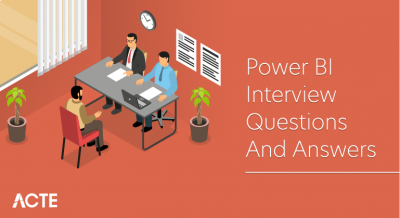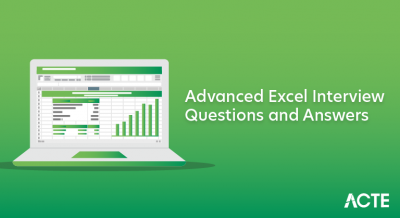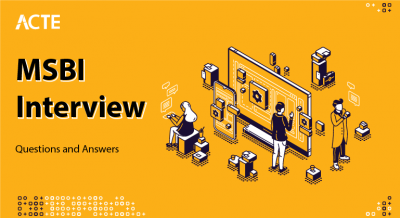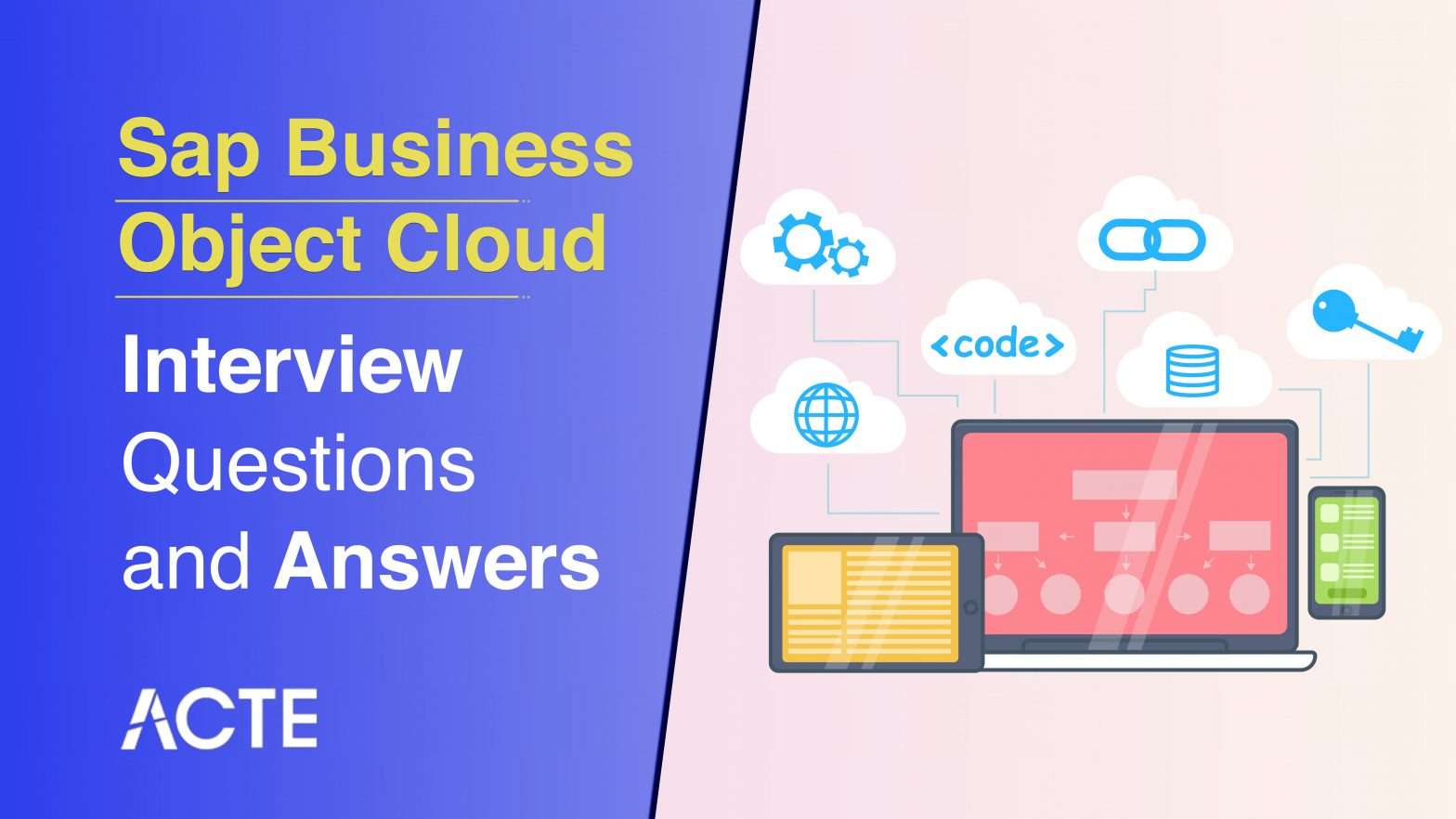
SAP Business Object Cloud is a cloud-based solution by SAP that integrates business intelligence, planning, and predictive analytics in a single platform. It enables users to access, analyze, and share data across their organization, facilitating better decision-making and collaboration. It offers features like data visualization, planning and forecasting, and predictive analytics to help businesses gain insights and drive performance.
1. What is SAP BusinessObjects Cloud?
Ans:
SAP BusinessObjects Cloud is a cloud-based software-as-a-service (SaaS) analytics solution that allows businesses to access, visualize, and share insights from their data across various sources in real-time. This platform integrates various functionalities, such as business intelligence (BI), predictive analytics, planning, and data visualization, into a single, unified solution.
2. What are the key differences between SAP BusinessObjects Cloud and traditional BI tools?
Ans:
- Unlike traditional BI tools, SAP BusinessObjects Cloud operates in the cloud, offering scalability, flexibility, and accessibility from any device with an internet connection.
- It also provides advanced analytics capabilities such as predictive analytics and machine learning.
- Additionally, SAP BusinessObjects Cloud offers a user-friendly interface with drag-and-drop functionality, making it easier for business users to create reports and dashboards without extensive technical knowledge.
3. What is the different between Business Intelligence and Predictive Anslytics?
Ans:
“`html| Aspect | Business Intelligence (BI) | Predictive Analytics |
|---|---|---|
| Purpose | Analyzes past and current data to provide insights and reporting. | Uses statistical algorithms and machine learning to predict future outcomes. |
| Focus | Descriptive and diagnostic analytics. | Predictive and prescriptive analytics. |
| Time Frame | Historical and real-time data analysis. | Future-oriented predictions and trends. |
| Techniques Used | Data visualization, dashboards, and reporting tools. | Statistical models, machine learning, and data mining. |
4. How does SAP BusinessObjects Cloud ensure data security and compliance?
Ans:
- SAP BusinessObjects Cloud employs various security measures to ensure the confidentiality, integrity, and availability of data.
- This includes role-based access control, encryption, audit trails, and compliance with industry standards such as GDPR and HIPAA.
- Additionally, data governance features allow administrators to manage user permissions, monitor data usage, and enforce data policies to maintain compliance with regulatory requirements.
5. What capabilities does SAP BusinessObjects Cloud have for handling big data?
Ans:
Yes, SAP BusinessObjects Cloud is designed to handle large volumes of data, including big data, by leveraging in-memory computing and distributed processing capabilities. This allows businesses to analyze vast amounts of data quickly and efficiently, regardless of its size or complexity. With support for data sources such as SAP HANA, SAP BW, SAP S/4HANA, Hadoop, and other databases, SAP BusinessObjects Cloud can seamlessly integrate and analyze data from multiple sources to provide comprehensive insights.
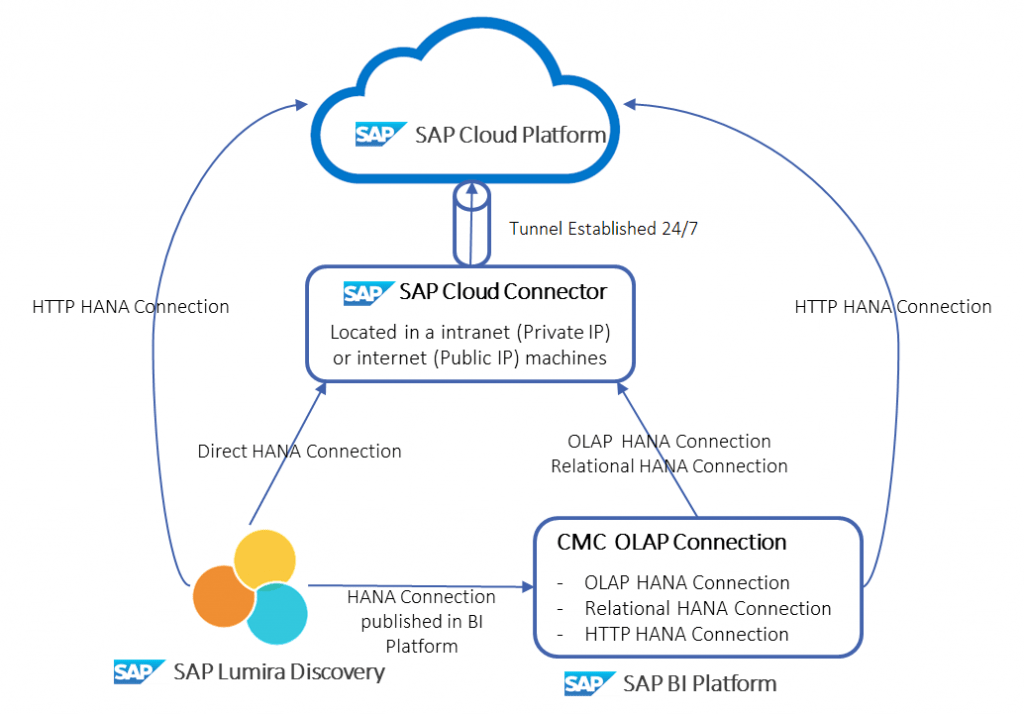
6. What ways does SAP BusinessObjects Cloud support self-service analytics?
Ans:
- SAP BusinessObjects Cloud empowers business users to perform self-service analytics by providing an intuitive interface and drag-and-drop functionality for data visualization and analysis.
- With features like Smart Discovery and Smart Insights, users can uncover hidden trends and insights in their data without the need for advanced technical skills or assistance from IT.
- Additionally, the platform offers guided data exploration capabilities, allowing users to easily navigate through complex datasets and ask ad-hoc questions to drive decision-making.
7. What types of data visualizations are available in SAP BusinessObjects Cloud?
Ans:
SAP BusinessObjects Cloud offers a wide range of data visualization options, including bar charts, line charts, pie charts, scatter plots, heat maps, geo maps, treemaps, and more. Users can customize these visualizations by adjusting colors, labels, axes, and other properties to represent their data best. Furthermore, interactive features such as drill-down, filtering, and highlighting enhance the user experience and enable a more profound exploration of data.
8. How does SAP BusinessObjects Cloud facilitate data collaboration and sharing?
Ans:
SAP BusinessObjects Cloud provides collaborative features that allow users to share insights with colleagues and stakeholders securely. Users can publish reports and dashboards to a shared workspace where team members can access, view, and interact with the content in real time. Additionally, built-in commenting and annotation tools enable users to provide feedback, ask questions, and engage in discussions directly within the context of the data.
9. What are some examples of predictive analytics capabilities in SAP BusinessObjects Cloud?
Ans:
- Forecasting future trends and outcomes based on historical data using algorithms like exponential smoothing and linear regression.
- Identifying patterns and anomalies in data through clustering and outlier detection techniques.
- Predicting customer behavior, product demand, and other business metrics using machine learning algorithms like decision trees and neural networks.
10. How does SAP Business Objects Cloud integrate with other SAP products and third-party applications?
Ans:
SAP BusinessObjects Cloud provides seamless integration with other SAP products such as SAP S/4HANA, SAP BW, SAP HANA, and SAP Analytics Cloud, allowing organizations to leverage their existing investments in SAP technology. Additionally, the platform supports connectivity to a wide range of third-party applications and data sources including databases, cloud applications, flat files, and web services through standard protocols like OData, JDBC, and RESTful APIs.
11. What measures does SAP BusinessObjects Cloud implement to ensure data accuracy and reliability?
Ans:
SAP BusinessObjects Cloud employs data validation and cleansing techniques to ensure the accuracy and reliability of data. This includes data profiling to identify inconsistencies and errors, data standardization to enforce consistency across datasets, and data enrichment to enhance the quality of data by integrating external sources or algorithms. Additionally, automated monitoring tools are utilized to track data quality over time, ensuring ongoing accuracy.
12. What role does machine learning play in SAP BusinessObjects Cloud?
Ans:
- Machine learning algorithms are integrated into various aspects of SAP BusinessObjects Cloud, including predictive analytics, intelligent insights, and natural language processing.
- These algorithms analyze large volumes of data to uncover patterns, trends, and correlations, enabling users to make data-driven decisions and gain valuable insights into their business operations.
13. What capabilities does SAP BusinessObjects Cloud have for handling real-time data streaming?
Ans:
Yes, SAP BusinessObjects Cloud supports real-time data streaming through integration with SAP HANA and other streaming data sources. This allows organizations to analyze and visualize streaming data in real time, enabling them to monitor critical metrics, detect anomalies, and respond quickly to changing business conditions. By leveraging this capability, businesses can make data-driven decisions more effectively and stay ahead of emerging trends.
14. What strategies does SAP BusinessObjects Cloud employ to tackle scalability and performance challenges?
Ans:
- SAP BusinessObjects Cloud leverages in-memory computing and distributed processing capabilities to address scalability and performance challenges.
- By storing data in memory and distributing processing tasks across multiple nodes, the platform can handle large volumes of data and complex analytical queries with low latency and high throughput.
15. What role does SAP BusinessObjects Cloud play in enterprise planning and budgeting?
Ans:
SAP BusinessObjects Cloud offers built-in planning and budgeting capabilities that enable organizations to streamline their financial planning processes. Users can create budgets, forecasts, and what-if scenarios, allocate resources, and track performance against targets in real time, helping them make informed decisions and optimize financial performance.
16. How does SAP BusinessObjects Cloud support mobile access and on-the-go analytics?
Ans:
SAP BusinessObjects Cloud provides native mobile apps for iOS and Android devices, allowing users to access, view, and interact with their data on the go. The mobile apps offer the same functionality as the web application, including data visualization, exploration, and collaboration features, ensuring that users can stay connected and productive wherever they are.
17. What are the key benefits of migrating to SAP BusinessObjects Cloud from on-premise BI solutions?
Ans:
- Migrating to SAP BusinessObjects Cloud offers several benefits, including reduced infrastructure costs, simplified management and maintenance, improved scalability and flexibility, and enhanced collaboration and accessibility.
- Additionally, the platform provides access to advanced analytics capabilities and real-time insights that may not be available in traditional on-premise BI solutions.
18. What measures does SAP BusinessObjects Cloud take to ensure regulatory compliance and data governance?
Ans:
- SAP BusinessObjects Cloud provides robust data governance features that enable organizations to ensure regulatory compliance and data integrity.
- This includes role-based access control, data encryption, audit trails, and compliance with industry standards such as GDPR, HIPAA, and SOC 2.
- Additionally, the platform offers data lineage and metadata management capabilities to track the lineage of data and ensure its quality and reliability.
19. What ways can SAP BusinessObjects Cloud be customized to address specific business requirements?
Ans:
Yes, SAP BusinessObjects Cloud can be customized to meet specific business requirements through various extensibility options. This includes creating custom data models, designing custom reports and dashboards, integrating with third-party applications, and developing custom extensions using SDKs and APIs. These customization options enable organizations to tailor the platform to their unique needs and workflows.
20. How does SAP BusinessObjects Cloud support multi-tenancy and scalability for large enterprises?
Ans:
SAP BusinessObjects Cloud is designed to support multi-tenancy and scalability for large enterprises by leveraging cloud-native architecture and elastic scaling capabilities. The platform can dynamically allocate resources based on demand, ensuring optimal performance and availability for all users. Additionally, built-in multi-tenancy features enable organizations to manage multiple instances and tenants from a single administrative interface, reducing complexity and overhead.
21. How does SAP BusinessObjects Cloud handle data integration from various sources?
Ans:
SAP BusinessObjects Cloud supports data integration from multiple sources, including SAP systems, databases, cloud applications, and flat files. It provides connectors and adapters for seamless integration with popular data sources such as SAP HANA, SAP BW, Salesforce, Google Analytics, and more. Users can easily connect to these sources, extract data, and create unified data models for analysis.
22. What role does data modeling play in SAP BusinessObjects Cloud?
Ans:
- Data modeling in SAP BusinessObjects Cloud involves creating and managing data models to prepare data for analysis.
- This includes tasks such as defining data sources, importing data, transforming and enriching data, and creating relationships between datasets.
- Data models serve as the foundation for building reports, dashboards, and visualizations in the platform.
23. What features does SAP BusinessObjects Cloud offer to facilitate real-time analytics?
Ans:
SAP BusinessObjects Cloud enables real-time analytics through integration with SAP HANA and other real-time data sources. By accessing data in memory and processing analytical queries in real-time, the platform can deliver insights and visualizations with minimal latency. This allows users to monitor critical metrics, detect trends, and make informed decisions in real-time.
24. What are the advantages of using SAP BusinessObjects Cloud for business planning and forecasting?
Ans:
- Centralized planning: Users can create and manage budgets, forecasts, and plans in a centralized environment, ensuring consistency and alignment across the organization.
- Collaboration: Built-in collaboration features enable stakeholders to collaborate on planning activities, share insights, and make decisions together in real time.
- Scenario analysis: Users can create multiple what-if scenarios to evaluate different assumptions and strategies, helping them identify risks and opportunities and make proactive decisions.
25. What capabilities does SAP BusinessObjects Cloud provide to support agile decision-making?
Ans:
SAP BusinessObjects Cloud enables agile decision-making by providing real-time access to data, intuitive self-service analytics tools, and collaborative features that empower users to explore, analyze, and share insights quickly. With the ability to access data from anywhere, on any device, and collaborate with colleagues in real time, users can make faster, more informed decisions that drive business success.
26. What role does data storytelling play in SAP BusinessObjects Cloud?
Ans:
Data storytelling in SAP BusinessObjects Cloud involves using data visualization and narrative techniques to communicate insights and findings effectively. Users can create interactive stories that combine visualizations, text annotations, and annotations to explain trends, patterns, and outliers in the data. This helps users convey the significance of their findings and make a compelling case for action.
27. How does SAP BusinessObjects Cloud ensure data privacy and compliance with regulations?
Ans:
SAP BusinessObjects Cloud employs various security measures to ensure data privacy and compliance with regulations such as GDPR, HIPAA, and SOC 2. This includes role-based access control, data encryption, audit trails, and compliance with industry standards and regulations. Additionally, the platform offers features such as data anonymization and masking to protect sensitive information and ensure compliance with data privacy laws.
28. What types of analytics capabilities are available in SAP BusinessObjects Cloud?
Ans:
- Descriptive analytics: Analyzing historical data to understand past performance and trends.
- Predictive analytics: Forecasting future trends and outcomes based on historical data and predictive modeling techniques.
- Prescriptive analytics: Providing recommendations and insights to guide decision-making and optimize outcomes.
- Diagnostic analytics: Identifying the root causes of problems and issues by analyzing data patterns and relationships.
29. What tools does SAP BusinessObjects Cloud offer to facilitate data-driven decision-making?
Ans:
SAP BusinessObjects Cloud enables data-driven decision-making by providing users with access to timely, relevant, and accurate data, as well as powerful analytics tools to analyze and visualize that data. By empowering users to explore data, uncover insights, and collaborate with colleagues, the platform helps organizations make informed decisions that drive business success.
30. What are the advantages of using a cloud-based analytics solution like SAP BusinessObjects Cloud?
Ans:
- Scalability: The ability to scale resources up or down as needed to accommodate changing business requirements.
- Flexibility: Access to analytics capabilities from anywhere, on any device, with an internet connection.
- Cost-effectiveness: Reduced infrastructure costs and pay-as-you-go pricing models that align costs with usage.
- Innovation: Access to the latest features and updates without the need for costly upgrades or maintenance.
31. How does SAP BusinessObjects Cloud support data preparation and cleansing?
Ans:
SAP BusinessObjects Cloud offers data preparation capabilities that allow users to clean, transform, and enrich their data before analysis. This includes tasks such as removing duplicates, standardizing formats, filling missing values, and combining data from multiple sources. The platform provides a visual interface and built-in functions for performing these tasks quickly and efficiently.
32. What role does data governance play in SAP BusinessObjects Cloud?
Ans:
Data governance in SAP BusinessObjects Cloud involves defining policies, processes, and standards for managing data quality, security, and compliance. This includes tasks such as defining data ownership, establishing data access controls, enforcing data quality rules, and monitoring data usage. Data governance ensures that data is accurate, consistent, and secure throughout its lifecycle.
33. What methods does SAP BusinessObjects Cloud use to enhance data collaboration across departments?
Ans:
SAP BusinessObjects Cloud facilitates data collaboration across departments by providing a centralized platform where users can share insights, collaborate on analysis, and make decisions together. Users can publish reports and dashboards to shared workspaces, invite colleagues to collaborate, and discuss findings in real time using built-in commenting and annotation tools. This fosters collaboration and alignment across departments and ensures that everyone has access to the same information.
34. What integration capabilities does SAP BusinessObjects Cloud have with SAP ERP systems?
Ans:
- Yes, SAP BusinessObjects Cloud can be integrated with SAP ERP systems such as SAP S/4HANA, SAP ECC, and SAP Business Suite.
- This allows organizations to access data from their ERP systems, perform analytics, and create reports and dashboards in SAP BusinessObjects Cloud.
- Integration with SAP ERP systems enables users to leverage their existing investments in SAP technology and gain insights into their business processes.
35. How does SAP BusinessObjects Cloud support data visualization best practices?
Ans:
SAP BusinessObjects Cloud supports data visualization best practices by offering a wide range of visualization options, including bar charts, line charts, pie charts, scatter plots, and more. Users can choose the most appropriate visualization type for their data and customize it to communicate insights effectively. The platform also provides interactive features such as drill-down, filtering, and highlighting to enhance the user experience and enable a more profound exploration of data.
36. What are some everyday use cases for SAP BusinessObjects Cloud in sales and marketing?
Ans:
- Sales performance analysis: Analyzing sales data to identify top-performing products, regions, and sales representatives.
- Marketing campaign analysis: Evaluating the effectiveness of marketing campaigns by tracking key metrics such as leads generated, conversions, and ROI.
- Customer segmentation: Segmenting customers based on demographics, purchasing behavior, and other criteria to more effectively target marketing efforts.
37. How does SAP BusinessObjects Cloud enable data-driven HR decision-making?
Ans:
SAP BusinessObjects Cloud enables data-driven HR decision-making by providing insights into workforce metrics such as employee turnover, retention, performance, and engagement. HR professionals can analyze this data to identify trends, patterns, and correlations and make informed decisions about recruitment, talent management, training, and workforce planning. The platform also supports collaboration and sharing of HR insights across the organization.
38. What are the advantages of using predictive analytics in SAP BusinessObjects Cloud?
Ans:
- Anticipating future trends and outcomes: Predictive analytics algorithms can analyze historical data to forecast future trends and outcomes, enabling organizations to anticipate changes and take proactive actions.
- Improving decision-making: By providing insights into future outcomes and potential scenarios, predictive analytics can help organizations make better-informed decisions and mitigate risks.
- Personalizing customer experiences: Predictive analytics can analyze customer data to predict behavior and preferences, enabling organizations to personalize marketing campaigns, offers, and recommendations.
39. What features does SAP BusinessObjects Cloud provide to enhance data-driven supply chain management?
Ans:
SAP BusinessObjects Cloud supports data-driven supply chain management by providing insights into key supply chain metrics such as inventory levels, lead times, supplier performance, and demand forecasts. Organizations can analyze this data to optimize inventory levels, reduce costs, improve supplier relationships, and enhance overall supply chain efficiency. The platform also supports collaboration and sharing of supply chain insights across departments and stakeholders.
40. What are some best practices for implementing SAP BusinessObjects Cloud in an organization?
Ans:
- Define clear objectives and requirements: Identify the business goals and requirements that the platform needs to address and prioritize them based on their importance and impact.
- Involve stakeholders early and often: Engage stakeholders early in the implementation process to address their needs. This fosters their investment in the project’s success.
- Provide training and support: Offer training and support to users to help them become familiar with the platform and its capabilities, and provide ongoing support to address any issues or questions that arise.
41. How does SAP BusinessObjects Cloud enable financial reporting and analysis?
Ans:
SAP BusinessObjects Cloud enables financial reporting and analysis by providing access to economic data from various sources such as ERP systems, databases, and spreadsheets. Users can create financial reports, balance sheets, income statements, and cash flow statements, and perform analysis such as variance analysis, profitability analysis, and economic forecasting. The platform also supports collaboration and sharing of financial insights across finance teams and stakeholders.
42. What role does artificial intelligence (AI) play in SAP BusinessObjects Cloud?
Ans:
Artificial intelligence (AI) plays a significant role in SAP BusinessObjects Cloud by powering advanced analytics capabilities such as predictive analytics, intelligent insights, and natural language processing. AI algorithms analyze data to uncover patterns, trends, and correlations and provide recommendations and insights to guide decision-making. This helps users make faster, more informed decisions and gain deeper insights into their data.
43. What features does SAP BusinessObjects Cloud offer to support industry-specific analytics and reporting?
Ans:
SAP BusinessObjects Cloud supports industry-specific analytics and reporting through its extensibility and customization capabilities. Organizations can create custom data models, reports, and dashboards tailored to their specific industry requirements, such as retail, healthcare, manufacturing, or financial services. This enables organizations to analyze industry-specific metrics, track key performance indicators (KPIs), and gain insights into industry trends and benchmarks.
44. What are some examples of data visualization best practices in SAP Business Objects Cloud?
Ans:
- Choosing the right visualization type: Based on the data and the insights want to convey, select the most appropriate visualization type (e.g., bar chart, line chart, pie chart).
- Providing context: Providing context and annotations to help users understand the significance of the data and the insights it represents.
- Effective use of color and formatting: Use color and formatting to draw attention to important data points and emphasize critical insights.
45. What capabilities does SAP BusinessObjects Cloud provide to enhance data-driven decision-making in procurement?
Ans:
SAP BusinessObjects Cloud supports data-driven decision-making in procurement by providing insights into crucial procurement metrics such as supplier performance, spend analysis, contract compliance, and inventory levels. Procurement professionals can analyze this data to identify cost-saving opportunities, optimize supplier relationships, mitigate risks, and improve overall procurement efficiency. The platform also supports collaboration and sharing of procurement insights across departments and stakeholders.
46. What are some critical considerations for data security in SAP BusinessObjects Cloud?
Ans:
- Role-based access control: Implementing role-based access control to restrict access to sensitive data and functionalities based on user roles and permissions.
- Data encryption: Encrypting data at rest and in transit protects it from unauthorized access and ensures confidentiality.
- Data governance: Establishing data governance policies and processes to manage data quality, integrity, and compliance throughout its lifecycle.
47. How does SAP BusinessObjects Cloud support customer analytics and segmentation?
Ans:
SAP BusinessObjects Cloud supports customer analytics and segmentation by providing insights into customer behavior, preferences, and demographics. Organizations can analyze customer data to segment customers based on criteria such as purchasing behavior, geographic location, and demographic characteristics and tailor marketing campaigns, offers, and messages to specific customer segments. This helps organizations improve customer targeting, acquisition, and retention and drive business growth.
48. What are some common challenges organizations may face when implementing SAP BusinessObjects Cloud?
Ans:
- Data integration complexity: Integrating data from multiple sources and systems can be complex and time-consuming, especially if the data is disparate or poorly structured.
- User adoption: Ensuring user adoption and engagement with the platform can be challenging, mainly if users are accustomed to legacy systems or need more training and support.
- Security and compliance: Ensuring data security and compliance with regulations such as GDPR, HIPAA, and SOC 2 can be challenging, especially if sensitive or regulated data is involved.
49. How does SAP BusinessObjects Cloud support data-driven decision-making in retail?
Ans:
SAP BusinessObjects Cloud supports data-driven decision-making in retail by providing insights into critical retail metrics such as sales performance, inventory management, customer segmentation, and product trends. Retailers can analyze this data to optimize pricing, promotions, and product assortments, improve inventory management and supply chain efficiency, and enhance the overall customer experience. The platform also supports collaboration and sharing of retail insights across departments and stakeholders.
50. What features does SAP BusinessObjects Cloud offer for data visualization in executive dashboards?
Ans:
SAP BusinessObjects Cloud offers various visualization options—charts, graphs, maps, and tables—for executive dashboards, allowing quick insights into key metrics and trends. Executives can customize dashboards to focus on relevant KPIs, drill down for deeper insights, and benefit from real-time updates and collaboration features for informed decision-making.
51. What measures does SAP BusinessObjects Cloud implement to support data governance and ensure compliance with regulatory standards?
Ans:
- SAP BusinessObjects Cloud supports data governance and compliance with regulatory standards by providing features such as role-based access control, data encryption, audit trails, and compliance with industry regulations such as GDPR, HIPAA, and SOC 2.
- The platform also offers data lineage and metadata management capabilities to track data’s lineage and ensure its quality and reliability.
52. What are some key performance indicators (KPIs) that organizations can track using SAP BusinessObjects Cloud?
Ans:
Some key performance indicators (KPIs) that organizations can track using SAP BusinessObjects Cloud include:
- Revenue and profit margins
- Sales growth and conversion rates
- Customer acquisition and retention rates
- Inventory turnover and stock levels
- Employee productivity and turnover rates
- Marketing ROI and customer lifetime value
53. How does SAP BusinessObjects Cloud enable data-driven decision-making in healthcare?
Ans:
SAP BusinessObjects Cloud enables data-driven decision-making in healthcare by providing insights into key healthcare metrics such as patient outcomes, treatment effectiveness, resource utilization, and population health trends. Healthcare organizations can analyze this data to improve patient care, optimize clinical workflows, reduce costs, and enhance overall healthcare delivery.
54. What role does predictive maintenance play in SAP BusinessObjects Cloud for asset-intensive industries?
Ans:
Predictive maintenance in SAP BusinessObjects Cloud enables asset-intensive industries such as manufacturing, utilities, and transportation to predict equipment failures and maintenance needs based on historical data and predictive analytics algorithms. By analyzing equipment performance data, organizations can identify patterns and anomalies that indicate potential failures and schedule maintenance proactively to minimize downtime, reduce costs, and optimize asset performance.
55. How does SAP BusinessObjects Cloud enable data-driven decision-making in manufacturing?
Ans:
- SAP BusinessObjects Cloud aids data-driven decision-making in manufacturing by providing insights into production efficiency, quality control, inventory, and supply chain visibility.
- Manufacturers can analyze this data to optimize production processes, improve product quality, reduce waste and downtime, and enhance overall operational efficiency.
- The platform also supports collaboration and sharing of manufacturing insights across production teams, suppliers, and stakeholders.
56. What are some common challenges organizations may face when migrating to SAP BusinessObjects Cloud from legacy BI systems?
Ans:
- Data migration complexity: Migrating data from legacy systems to SAP BusinessObjects Cloud can be complex and time-consuming, especially if the data is stored in multiple formats or systems.
- User training and adoption: Ensuring that users are trained and comfortable using the new platform can be challenging, especially if they are accustomed to legacy systems or need more technical skills.
- Integration with existing systems: Integrating SAP BusinessObjects Cloud with existing systems and processes can be challenging, especially if dependencies or customizations need to be addressed.
57. What features does SAP BusinessObjects Cloud provide to enhance data-driven decision-making in higher education?
Ans:
SAP BusinessObjects Cloud supports data-driven decision-making in higher education by providing insights into critical educational metrics such as student enrollment, retention, graduation rates, academic performance, and institutional effectiveness. Higher education institutions can analyze this data to improve student outcomes, optimize resource allocation, identify areas for improvement, and enhance overall institutional performance.
58. What are some critical considerations for selecting data sources for analysis in SAP BusinessObjects Cloud?
Ans:
- Data relevance: Ensuring that the data sources contain relevant and accurate information that aligns with the analysis objectives and requirements.
- Data quality: Assessing the quality of the data sources in terms of accuracy, completeness, consistency, and timeliness.
- Data governance: Considering data governance policies and procedures to ensure compliance with regulations and standards, as well as data security and privacy requirements.
59. What capabilities does SAP BusinessObjects Cloud offer to support data-driven decision-making in the public sector?
Ans:
SAP BusinessObjects Cloud enables data-driven decision-making in the public sector by providing insights into crucial government metrics such as public service delivery, citizen satisfaction, budget allocation, and regulatory compliance. Government agencies can analyze this data to improve service delivery, allocate resources more effectively, measure and track performance against targets, and enhance overall transparency and accountability.
60. How does SAP BusinessObjects Cloud support data visualization for geographical analysis?
Ans:
- SAP BusinessObjects Cloud supports data visualization for geographical analysis by providing geo maps and heat maps that enable users to visualize and analyze spatial data.
- Users can create maps that display geographic regions, points of interest, and other spatial data and overlay them with analytical insights such as sales performance, customer demographics, and market penetration. T
- he platform also supports interactive features such as zooming, panning, and filtering to enable users to explore and interact with the data dynamically.
61. What strategies does SAP BusinessObjects Cloud use to support data governance and ensure compliance with regulatory standards?
Ans:
SAP BusinessObjects Cloud offers robust data governance features, including role-based access control, data encryption, audit trails, and compliance with regulations like GDPR, HIPAA, and SOC 2. Additionally, it provides data lineage and metadata management capabilities to track data quality and ensure reliability, empowering organizations to maintain trust in their data assets.
62. What are some key performance indicators (KPIs) that organizations can track using SAP BusinessObjects Cloud?
Ans:
Organizations can track various KPIs using SAP BusinessObjects Cloud, such as revenue, profit margins, sales growth, customer acquisition, inventory turnover, employee productivity, marketing ROI, supply chain efficiency, and financial ratios, enabling them to make informed strategic decisions. This comprehensive monitoring fosters a data-driven culture that enhances overall performance and accountability.
63. How does SAP BusinessObjects Cloud enable data-driven decision-making in healthcare?
Ans:
SAP BusinessObjects Cloud enables data-driven decision-making in healthcare by providing insights into patient outcomes, treatment effectiveness, resource utilization, and population health trends. This helps improve patient care, clinical workflows, cost reduction, and overall healthcare delivery. By leveraging these insights, healthcare organizations can proactively address challenges and optimize their operations for better patient experiences.
64. What role does predictive maintenance play in SAP BusinessObjects Cloud for asset-intensive industries?
Ans:
Predictive maintenance in SAP BusinessObjects Cloud allows asset-intensive industries to predict equipment failures and maintenance needs based on historical data and predictive analytics algorithms. This helps minimize downtime, reduce costs, and optimize asset performance. By proactively addressing maintenance issues, organizations can enhance operational efficiency and extend the lifespan of their assets.
65. How does SAP BusinessObjects Cloud support data-driven decision-making in manufacturing?
Ans:
- SAP BusinessObjects Cloud supports data-driven decision-making in manufacturing by providing insights into production efficiency, quality control, inventory management, and supply chain visibility.
- This helps optimize production processes, improve product quality, and enhance overall operational efficiency.
66. What are some common challenges organizations may face when migrating to SAP BusinessObjects Cloud from legacy BI systems?
Ans:
When migrating to SAP BusinessObjects Cloud from legacy BI systems, organizations may encounter several common challenges. One significant challenge is data migration, as transitioning historical data and ensuring its integrity and compatibility with the new platform can be complex and time-consuming. Another challenge is the need for retraining and upskilling employees to adapt to the new platform’s interface and functionalities, which may require significant investment in training programs and change management initiatives.
67. What tools does SAP BusinessObjects Cloud provide to facilitate data-driven decision-making in higher education?
Ans:
SAP BusinessObjects Cloud supports data-driven decision-making in higher education by providing insights into student enrollment, retention, graduation rates, academic performance, and institutional effectiveness. This helps improve student outcomes, resource allocation, and overall institutional performance. By leveraging these insights, institutions can implement targeted strategies to enhance the educational experience and drive continuous improvement.
68. What are some critical considerations for selecting data sources for analysis in SAP BusinessObjects Cloud?
Ans:
- When selecting data sources for analysis in SAP BusinessObjects Cloud, several critical considerations should be taken into account.
- Firstly, it’s essential to ensure that the chosen data sources contain relevant and accurate information that aligns with the analytical objectives and business requirements.
- Additionally, compatibility and integration capabilities with SAP BusinessObjects Cloud need to be assessed to ensure smooth data connectivity and seamless data transfer.
69. What features does SAP BusinessObjects Cloud offer to facilitate data-driven decision-making in the public sector?
Ans:
SAP BusinessObjects Cloud enables data-driven decision-making in the public sector by providing insights into public service delivery, citizen satisfaction, budget allocation, and regulatory compliance. This helps improve service delivery, resource allocation, and transparency/accountability. By utilizing these insights, public sector organizations can enhance their responsiveness to community needs and foster greater trust among citizens.
70. How does SAP BusinessObjects Cloud support data visualization for geographical analysis?
Ans:
SAP BusinessObjects Cloud supports geographical analysis through geo maps and heat maps, allowing users to visualize spatial data such as sales performance, customer demographics, and market penetration. Interactive features like zooming and filtering enhance exploration and interaction with the data. This spatial insight empowers organizations to make informed decisions based on location-based trends and patterns
71. How does SAP BusinessObjects Cloud ensure data accuracy and reliability?
Ans:
SAP BusinessObjects Cloud employs data validation and cleansing techniques to ensure the accuracy and reliability of data. This includes data profiling to identify inconsistencies and errors, data standardization to enforce consistency across datasets, and data enrichment to enhance the quality of data by integrating external sources or algorithms. By maintaining high data quality, organizations can trust their analytics and make more informed decisions.
72. What role does machine learning play in SAP BusinessObjects Cloud?
Ans:
- Machine learning algorithms are integrated into various aspects of SAP BusinessObjects Cloud, including predictive analytics, intelligent insights, and natural language processing.
- These algorithms analyze large volumes of data to uncover patterns, trends, and correlations, enabling users to make data-driven decisions and gain valuable insights into their business operations.
73. What capabilities does SAP BusinessObjects Cloud have for handling real-time data streaming?
Ans:
Yes, SAP BusinessObjects Cloud supports real-time data streaming through integration with SAP HANA and other streaming data sources. This allows organizations to analyze and visualize streaming data in real time, enabling them to monitor critical metrics, detect anomalies, and respond quickly to changing business conditions. This capability empowers businesses to make timely, data-driven decisions that enhance operational efficiency.
74. How does SAP BusinessObjects Cloud address scalability and performance challenges?
Ans:
SAP BusinessObjects Cloud leverages in-memory computing and distributed processing capabilities to address scalability and performance challenges. By storing data in memory and distributing processing tasks across multiple nodes, the platform can handle large volumes of data and complex analytical queries with low latency and high throughput.
75. What role does SAP BusinessObjects Cloud play in enterprise planning and budgeting?
Ans:
- SAP BusinessObjects Cloud offers built-in planning and budgeting capabilities that enable organizations to streamline their financial planning processes.
- Users can create budgets, forecasts, and what-if scenarios, allocate resources, and track performance against targets in real time, helping them make informed decisions and optimize financial performance.
76. What features does SAP BusinessObjects Cloud offer to support mobile access and on-the-go analytics?
Ans:
SAP BusinessObjects Cloud provides native mobile apps for iOS and Android devices, allowing users to access, view, and interact with their data on the go. The mobile apps offer the same functionality as the web application, including data visualization, exploration, and collaboration features, ensuring that users can stay connected and productive wherever they are.
77. What are the key benefits of migrating to SAP BusinessObjects Cloud from on-premise BI solutions?
Ans:
Migrating to SAP BusinessObjects Cloud offers several benefits, including reduced infrastructure costs, simplified management and maintenance, improved scalability and flexibility, and enhanced collaboration and accessibility. Additionally, the platform provides access to advanced analytics capabilities and real-time insights that may not be available in traditional on-premise BI solutions.
78. How does SAP BusinessObjects Cloud support regulatory compliance and data governance?
Ans:
- SAP BusinessObjects Cloud provides robust data governance features that enable organizations to ensure regulatory compliance and data integrity.
- These features include role-based access control, data encryption, audit trails, and compliance with industry standards such as GDPR, HIPAA, and SOC 2.
- Additionally, the platform offers data lineage and metadata management capabilities to track data’s lineage and ensure its quality and reliability.
79. What customization options does SAP BusinessObjects Cloud provide to meet specific business requirements?
Ans:
Yes, SAP BusinessObjects Cloud can be customized to meet specific business requirements through various extensibility options. This includes creating custom data models, designing custom reports and dashboards, integrating with third-party applications, and developing custom extensions using SDKs and APIs. These customization options enable organizations to tailor the platform to their unique needs and workflows.
80. What features does SAP BusinessObjects Cloud offer to support multi-tenancy and scalability for large enterprises?
Ans:
- SAP BusinessObjects Cloud is designed to support multi-tenancy and scalability for large enterprises by leveraging cloud-native architecture and elastic scaling capabilities.
- The platform can dynamically allocate resources based on demand, ensuring optimal performance and availability for all users.
- Additionally, built-in multi-tenancy features enable organizations to manage multiple instances and tenants from a single administrative interface, reducing complexity and overhead.
81. What collaboration features does SAP BusinessObjects Cloud provide to facilitate decision-making among users?
Ans:
SAP BusinessObjects Cloud offers collaborative features such as shared workspaces, comments, annotations, and real-time data sharing, allowing users to collaborate effectively on data analysis and decision-making. These features enable teams to share insights, discuss findings, and make decisions together in a collaborative environment. By fostering teamwork, organizations can enhance their overall analytical capabilities and drive more informed outcomes.
82. What are some advanced analytics capabilities available in SAP BusinessObjects Cloud?
Ans:
SAP BusinessObjects Cloud offers advanced analytics capabilities such as predictive analytics, machine learning, natural language processing, and geospatial analysis. These capabilities enable organizations to uncover hidden insights, predict future trends, and gain a deeper understanding of their data to drive informed decision-making. By leveraging these advanced tools, businesses can enhance their strategic planning and respond proactively to market changes.
83. How does SAP BusinessObjects Cloud integrate with other SAP applications and solutions?
Ans:
- SAP BusinessObjects Cloud integrates seamlessly with other SAP applications and solutions such as SAP S/4HANA, SAP BW/4HANA, SAP Analytics Cloud, and SAP Data Warehouse Cloud.
- This integration allows organizations to leverage their existing SAP investments and access data from multiple sources for analysis and reporting.
84. What role does data visualization play in SAP BusinessObjects Cloud?
Ans:
Data visualization plays a crucial role in SAP BusinessObjects Cloud by enabling users to create interactive and insightful visualizations of their data. These visualizations help users understand complex data patterns, identify trends, and communicate insights effectively to support decision-making. By transforming raw data into intuitive visual formats, organizations can enhance their analytical capabilities and engage stakeholders more effectively.
85. What features does SAP BusinessObjects Cloud provide to support self-service analytics for business users?
Ans:
SAP BusinessObjects Cloud offers self-service analytics capabilities that empower business users to access, analyze, and visualize data without relying on IT or data experts. Business users can create their reports, dashboards, and visualizations using intuitive drag-and-drop interfaces and pre-built templates. This democratization of data enables faster decision-making and fosters a culture of data-driven insights across the organization.
86. What security features does SAP BusinessObjects Cloud offer to protect sensitive data?
Ans:
- SAP BusinessObjects Cloud provides robust security features to protect sensitive data, such as role-based access control, data encryption, single sign-on, and multi-factor authentication.
- Additionally, the platform offers audit trails, activity monitoring, and compliance reporting to track data access and ensure regulatory compliance.
87. How does SAP BusinessObjects Cloud support hybrid deployment models?
Ans:
SAP BusinessObjects Cloud supports hybrid deployment models that allow organizations to deploy the platform both on-premise and in the cloud. This flexibility enables organizations to leverage existing on-premise infrastructure while also taking advantage of the cloud’s scalability and accessibility. By accommodating various deployment strategies, businesses can tailor their solutions to meet specific operational needs and optimize their resources.
88. What are some critical considerations for selecting the suitable deployment model for SAP BusinessObjects Cloud?
Ans:
Some critical considerations for selecting the suitable deployment model include data security requirements, regulatory compliance, integration with existing systems, scalability and performance needs, and budget constraints. Organizations should evaluate these factors carefully to choose the deployment model that best fits their requirements.
89. How does SAP BusinessObjects Cloud handle data governance and data quality management?
Ans:
SAP BusinessObjects Cloud provides robust data governance and data quality management capabilities to ensure data accuracy, reliability, and integrity. This includes features such as data validation, profiling, cleansing, and lineage tracking to maintain data quality throughout its lifecycle. By ensuring high data quality, organizations can build trust in their analytics and make informed decisions based on reliable information.
90. What role does SAP BusinessObjects Cloud play in digital transformation initiatives?
Ans:
SAP BusinessObjects Cloud plays a crucial role in digital transformation initiatives by enabling organizations to leverage data-driven insights to drive innovation, improve agility, and enhance competitiveness. The platform empowers organizations to make faster, more informed decisions based on real-time data, driving business growth and success.
91. How does SAP BusinessObjects Cloud support data connectivity to external sources?
Ans:
- SAP BusinessObjects Cloud offers a wide range of data connectivity options to connect to external sources such as databases, cloud applications, big data platforms, and on-premise systems.
- This includes native connectors, JDBC/ODBC drivers, RESTful APIs, and data import/export capabilities, enabling organizations to access and analyze data from diverse sources.
92. What role does SAP BusinessObjects Cloud play in business forecasting and scenario planning?
Ans:
SAP BusinessObjects Cloud provides robust forecasting and scenario planning capabilities that enable organizations to predict future trends and simulate different business scenarios. Users can create forecasts, apply predictive models, and perform what-if analysis to evaluate the potential impact of various business decisions and strategies. This empowers organizations to make proactive adjustments and enhance their strategic planning efforts.
93. How does SAP BusinessObjects Cloud support real-time analytics and decision-making?
Ans:
- SAP BusinessObjects Cloud supports real-time analytics and decision-making by providing access to real-time data streams, in-memory computing, and distributed processing capabilities.
- This allows organizations to analyze and visualize data in real-time, enabling them to monitor critical metrics, detect trends, and respond quickly to changing business conditions.
94. What role does SAP BusinessObjects Cloud play in data democratization within organizations?
Ans:
SAP BusinessObjects Cloud plays a crucial role in data democratization by empowering business users to access, analyze, and visualize data without relying on IT or data experts. By providing self-service analytics capabilities, intuitive interfaces, and pre-built templates, the platform enables users across the organization to explore data and make data-driven decisions independently.



